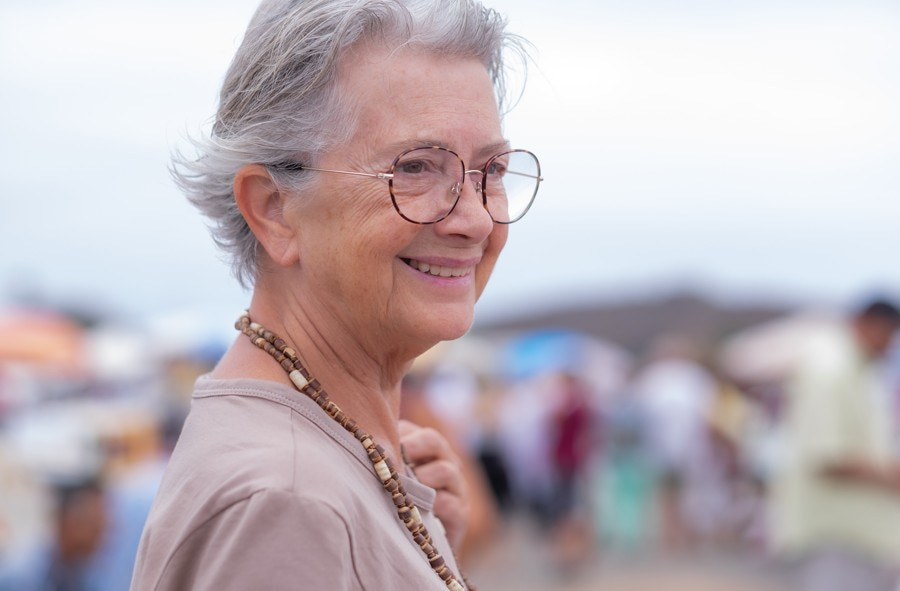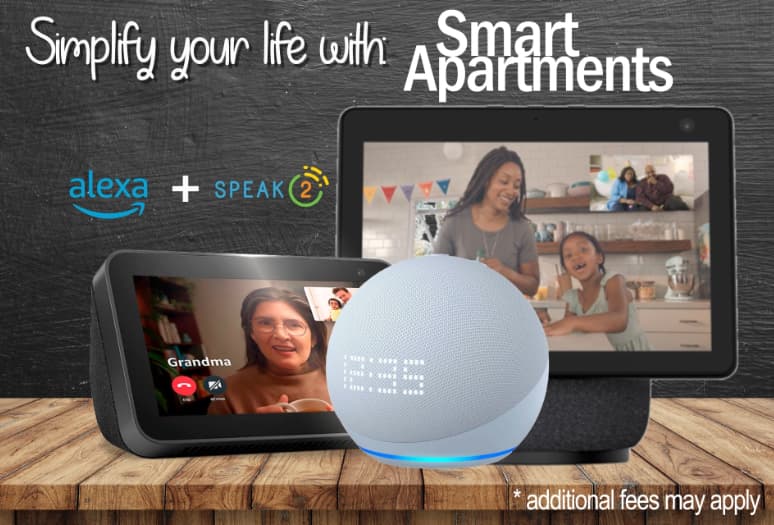Many families begin exploring senior living with good instincts—but not always with the right questions.

It’s natural to focus on what’s visible during a visit—welcoming lounges, cheerful staff, or dining menus. But what truly defines healthy aging in a senior community often lives beneath the surface.
What daily routines support emotional wellness?
How personalized is the care plan—really?
Will this community adapt as my loved one’s needs evolve?
Asking the right questions can reveal whether a place is just nice… or genuinely supportive.
In this guide, we’ll explore the key areas families often overlook when choosing senior living in Georgia—plus the deeper questions that lead to better decisions, stronger peace of mind, and long-term confidence.
Understanding What “Healthy Aging” Really Requires in a Senior Community
When families hear the phrase “healthy aging,” it often brings to mind physical health—safe spaces to walk, nutritious meals, and access to healthcare. While these are essential, healthy aging is much more than check-ups and exercise. It’s about living with intention, connection, and personal meaning at every stage.
So… what does healthy aging actually require in a senior living environment? Let’s break it down:
💬 1. Emotional Wellness Shouldn’t Be a Bonus
- Seniors thrive when they feel seen, heard, and emotionally supported—not just cared for.
- Look for communities that promote emotional safety through small group activities, consistent staff relationships, and spaces designed for calm, not just efficiency.
Ask This:
What does your community do to support residents’ emotional well-being on a daily basis?
🧑🤝🧑 2. Social Connection Must Be Intentional
- Loneliness isn’t just sad—it’s dangerous. Studies show it can increase the risk of dementia and depression.
- Healthy aging requires structured opportunities for connection: clubs, storytelling circles, intergenerational visits, and shared meals that feel like community, not routine.
Ask This:
How do you help new residents build relationships and avoid isolation?
🎨 3. Cognitive Stimulation Is a Core Need
- Brain health doesn’t stop at crossword puzzles. Creative expression, learning something new, or even sensory gardening can keep the mind flexible and alive.
- Memory care residents especially benefit from tailored activities that tap into emotional memory and identity.
Ask This:
What types of cognitive and creative programs are part of your weekly schedule?
🏃 4. Physical Movement Should Feel Natural and Encouraged
- You don’t need a gym to move well. Healthy aging is supported by walkable courtyards, chair yoga, dance nights, and gardening.
- Look for signs that movement is part of the daily rhythm—not a once-a-week event.
Ask This:
What kind of physical activity is integrated into daily life here?
🌱 5. Purpose and Autonomy Matter—At Every Age
- Aging doesn’t mean giving up control or identity. Communities that support healthy aging offer choices, routines with flexibility, and chances for residents to teach, lead, and contribute.
- Whether it’s mentoring, sharing skills, or decorating their own space, purpose must be part of the plan.
Ask This:
How do residents participate in shaping their own experience here?
💡 Pro Tip:
Healthy aging is not a checklist—it’s a culture.
It’s how a community makes someone feel every day: empowered, connected, and valued. The right questions will reveal whether that culture truly exists.

When Personalized Senior Care Is More Than Just a Phrase
What Personalized Senior Care Really Looks Like
According to the National Center for Assisted Living, over 70% of residents need help with at least two activities of daily living (ADLs)—like bathing, dressing, or medication management. But beyond those basics, personalized care means:
- Recognizing each resident’s life story, preferences, and rhythms
- Adapting care plans over time as needs evolve
- Offering choices, not just routines
- Seeing the person, not just the condition
🔍 Real personalization isn’t just medical—it’s social, emotional, and environmental.
Key Elements of Personalized Care (That You Can Actually Observe)
- 🧑⚕️ Flexible routines that adjust to when a resident prefers to wake up, eat, or rest—not one-size-fits-all schedules
- 🎵 Therapeutic activities chosen based on individual interests (music therapy for a lifelong musician, gardening for a retired botanist)
- 👥 Staff continuity, so residents are cared for by familiar faces who know their habits and triggers
- 🛏️ Room personalization—familiar furniture, memory boxes, or meaningful objects brought from home
- 📅 Family input used not only during intake, but throughout the resident’s stay
💡 Tip: Ask if the care plan is reviewed regularly, and how residents or families are involved in updating it.
Questions to Ask When Evaluating Personalized Care
- Can you describe how two residents here might have different care routines?
- How often are care plans reviewed and adjusted?
- What role do families play in shaping the daily experience?
- Are staff trained to recognize and respond to subtle changes in behavior or health?
- Can residents choose when and how they participate in activities or meals?
🧩 Why It Matters
When care is truly personalized:
- Residents feel seen and valued, not managed
- They’re more likely to engage in community life
- Anxiety and confusion (especially in memory care) decrease
Families feel more connected and confident in their decision
The Emotional Safety Factor Families Often Miss in Memory Care
When families think about memory care, they often focus on the medical side: safety protocols, secure doors, staff training. All of that matters—but there’s a quieter, deeper layer of care that’s just as critical:
👉 Emotional safety.
The kind that doesn’t show up in brochures… but is felt in a resident’s eyes, posture, and mood.
What Is Emotional Safety in Memory Care, Really?
It’s the sense of being known, not just monitored.
It’s feeling respected, not just managed.
It’s having routines that soothe, not confuse.
And above all, it’s being surrounded by people and spaces that reduce anxiety instead of triggering it.
💬 Ask These Insightful Questions During a Tour:
- How do you help residents feel emotionally secure in unfamiliar environments?
- What do you do when a resident becomes agitated or disoriented?
- Are staff members assigned consistently to the same residents?
- How do you incorporate familiar objects, scents, music, or routines into daily life?
- What happens when someone doesn’t want to participate in a scheduled activity?
💡 Pro tip: Watch for how staff greet residents. Do they use their names? Make eye contact? Adjust their tone or posture to match the resident’s state?

Look Beyond Locked Doors and Care Plans
Just because a community is secure doesn’t mean it’s comforting.
Here’s what to look for instead:
- 🎵 Sensory spaces with music, textures, and lighting designed to calm
- 🌿 Familiar smells like lavender, baked goods, or garden herbs
- 🖼️ Memory boxes or personalized room elements outside each door
- 🎨 Creative outlets that allow expression even without words
- 💬 Staff language that’s respectful, never infantilizing
🧩 Quick tip: Ask if you can observe an activity session. Look for signs of joy, patience, and connection—not just supervision.
❤️ Why It Matters More Than You Think
Emotional distress in memory care residents can lead to:
- 💤 Disrupted sleep
- 🍽️ Loss of appetite
- 🧠 Worsening confusion
- 💊 Increased reliance on medication
But when emotional safety is prioritized, you’ll often see:
- 🌞 More frequent smiles
- 👥 Calmer social interaction
- 🧘♀️ Reduced agitation and anxiety
- 🧠 Greater moments of clarity and recognition
Why Purpose and Belonging Are Vital in Senior Living Environments
🌱 Purpose Isn’t About Being Busy—It’s About Feeling Needed
While it’s easy to fill a calendar, the real question is: Why do these activities matter to the resident?
Here, purpose is found when a resident leads a book discussion that sparks memories. Or when a lifelong cook shares tips with the dining team. Or when someone helps select herbs for our landscaped courtyards, choosing rosemary not just for the scent—but because it reminds them of home.
💡 Tip: Ask your loved one what they want to keep doing or even teach others. Then ask the staff how that would be supported here.
🧩 Belonging Is the Opposite of Loneliness
Belonging doesn’t come from big events. It happens in the micro-moments:
- When staff remember that someone likes their tea lukewarm.
- When Alexa or Speak2 is used to call a granddaughter, creating routine connection.
- When residents are greeted by name—often with a shared joke.
Legacy Ridge at Marietta’s familiar faces, cozy courtyard routines, and resident-led groups like story circles and card games create an environment where people feel known—not managed.
LEARN MORE ABOUT OUR SMART APARTMENTS
🧠 Research shows that seniors with a strong sense of belonging experience better emotional stability, sharper cognition, and lower risk of depression.
Memory Care Residents Need Belonging Even More
In our dedicated Memory Care wing, identity often speaks through objects, rituals, and repetition. A Thursday painting class, a specific playlist, or even a volunteer activity can anchor memory better than conversation.
One resident may not remember your name—but may smile every time the same song plays. That’s purpose in action.
🧠Why It’s Neurologically Protective
The National Institute on Aging has shown that seniors who maintain purpose:
- Experience lower inflammation levels
- Have slower cognitive decline
- Are more socially engaged
- Enjoy longer, more fulfilling lives
This is more than a benefit. It’s a necessity—especially in Memory Care.
Questions Every Family Should Ask Before Choosing Senior Living
Choosing a senior living community isn’t like picking a hotel—it’s more like choosing a partner for the next chapter of life. And like any meaningful decision, the questions you ask reveal far more than the answers.
So forget “Do you have a gym?” and “Is there a hair salon?”
Let’s go deeper.
🧭 Think Like an Explorer, Not a Shopper
Instead of asking for a list of features, ask about experiences.
Instead of asking what they offer, ask how and why they offer it.
Because the goal isn’t just to find a place that looks good—
it’s to find one that feels right.
🧠 Questions That Reveal the Heart of the Community
- What’s something residents teach you, not the other way around?
If the answer is vague or overly scripted, it may signal low engagement or little genuine connection.
- Can you tell me about a recent moment when a resident surprised you?
You’re not looking for perfection—you’re looking for humanity.
- How do you help residents who don’t want to participate?
This shows how they respect autonomy while still gently encouraging connection.
- How do care plans change as needs evolve?
The best communities don’t just “update charts”—they adapt the entire rhythm of care.
- What kind of relationships do residents build with staff?
Listen for stories. If they talk about laughter, trust, or grief—they get it.
🏠 Environment Check: Ask With Your Eyes Too
Ask: Can residents personalize their rooms?
But also look: Do you see signs of life in the hallways—photos, hobbies, plants, memory boxes?
Ask: Is there outdoor space?
But also look: Is it used, loved, or just landscaped for brochures?
🧠 Tip: Pause and watch what happens between staff and residents when no one’s performing.
👩👧 Questions for Families That Stay Involved
- How do you keep families updated when something changes?
- Can I join activities or meals with my loved one?
- What happens if I’m concerned about something—who do I talk to, and how quickly do I get a response?
The right community will not only welcome family involvement—they’ll depend on it.
💡 Bonus Round: The Questions They Should Ask You
A great community will ask you questions like:
- What does your loved one value most?
- What helps them feel calm or joyful?
- What are your biggest fears about this transition?
If they’re not curious about who your loved one is, they may not be equipped to support who they’re becoming.
🎯 Final Thought
Don’t just ask what’s on the checklist.
Ask what’s in their culture. Ask what they believe about aging, dignity, and joy.
Because behind every polished tour and planned event…
you deserve to know what life here will feel like when the brochure is back in the drawer.





